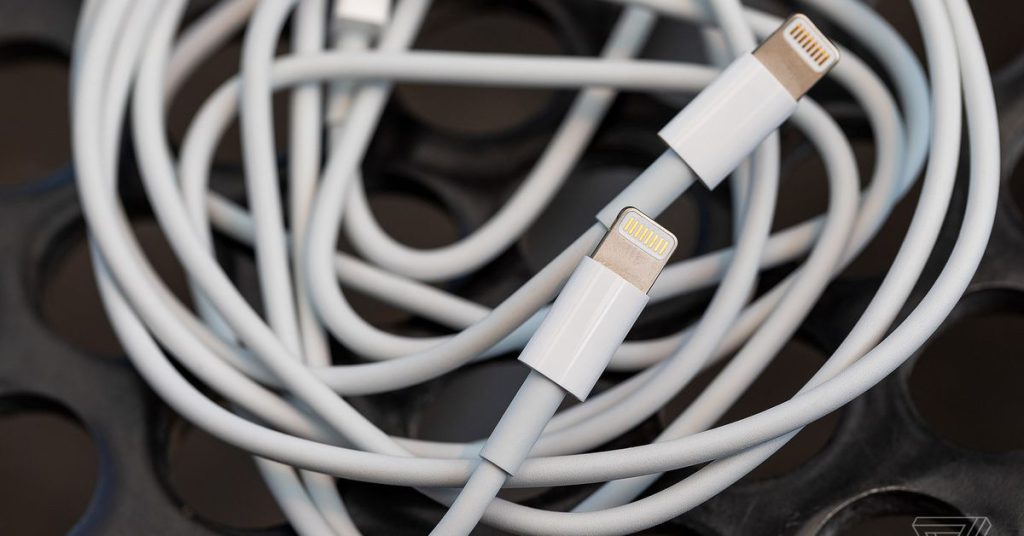
The world is rightfully celebrating the iPhone’s switch from Lightning to USB-C this week. People love to hate on Lightning — and they have good reasons to. Many of the world’s most popular devices now use USB-C ports, including Apple’s own iPads, meaning iPhone owners have been stuck toting around an extra cable just for their phone and its accessories.
But if you’ve been living in the Lightning world for the past decade like I have, things have been great anyway. I’m not ashamed to say it: I’m sad that Lightning is finally going away.
The Lightning Life, at least if you have an iPhone, has been convenient. Using a Lightning cable hardly requires any thought — its biggest revelation, at first, was that it could charge your phone no matter which way you plugged it in, a huge improvement over Apple’s old 30-pin connector. Plugging it into my iPhone when I’m sleepy before bed never feels like a hassle.
Lightning was small and reliable
The connector’s small size has kept everything Lightning-related small and portable, too. Back in 2012, when Apple debuted the Lightning port on the iPhone 5, this compact size was a huge part of what made the announcement so exciting. Lightning was 80 percent smaller than the comparatively huge 30-pin connector the iPhone had used before. That meant that Apple’s products — and the cables themselves — could look that much nicer. I can’t prove this, but I have to imagine that the iPhone 5’s sleek look was due in part to the switch to the smaller Lightning connector, and those tiny changes add up to saved space in a bag or pocket.
Not only are the cords themselves easy to travel with but the Lightning standard also created a generation of reliable and portable travel accessories. It powers one of my favorite Apple devices ever: the MagSafe Duo. In spite of Dieter Bohn’s middling impressions, I picked one up on sale and, frankly, I adore it. It’s a low-profile way for me to charge my iPhone, Apple Watch, and AirPods whenever I’m at my desk. When I travel, I can just fold up the MagSafe Duo and slip it into a small pocket in my backpack so that I can easily charge my devices at my final destination.
And even at home, the Lightning Life has been reliable. I never worry that Apple’s Lightning cables will randomly stop charging my devices (though I’ve been lucky to avoid some of the durability issues Lightning cables are sometimes known for). Apple’s solid magnets and the MagSafe Duo mean that my iPhone and Apple Watch almost always start charging as soon as I drop them on their charging spots — there’s no fussing around to make sure they’re aligned correctly.
With Lightning, I’ve built up an extremely trustworthy system for charging many of my Apple devices that I’m very happy with. Yes, Apple designed it that way thanks to its MFi program that gives Apple a cut of every MFi-certified charger or cable sold. And yes, because device makers have to go through Apple for MFi certification, that probably meant that some interesting charging accessories didn’t get made. But the MFi system meant that accessories worked and lacked the confusion of USB-C. Saying goodbye to Lightning doesn’t just mean losing a port and a connector; it means saying goodbye to a great collection of cables and products that I’ve come to depend on as part of my daily life and travel routines.
With all that said: I do understand where the Lightning haters are coming from. These days, basically every other device I own charges over USB-C. The iPhone has been the lone holdout, meaning that I have to toss both a USB-C power brick and my iPhone charging gear (including the MagSafe Duo!) in my bag before heading out the door.
USB-C offers the tantalizing promise of an extremely dependable system for charging all of my gadgets. And it will be a worthwhile switch once I have to make it — I’m in no rush to upgrade from my beloved iPhone 12 Mini — though there will be some friction. I’m already grumbling over the fact that Apple unceremoniously dumped the MagSafe Duo instead of releasing one with a USB-C port (though there are USB-C-based alternatives I can consider).
But those are minor quibbles. USB-C ports on the iPhone 15 lineup are obviously the better choice in 2023. USB-C does everything Lightning can do, and it often does those things better. Whatever my gripes about buying new charging gear, the transition won’t be nearly as painful as the switch from the 30-pin connector to Lightning; I already have a bunch of USB-C charging cables and bricks that I can use with a USB-C-equipped iPhone.
Still, I’ll look back on my 11 years (and counting) of Lightning Life fondly. They have been years of easy charging and lighter backpacks.
When Apple executive Phil Schiller introduced Lightning in 2012, he called it a “modern connector for the next decade.” He was more than right.

 Latest Breaking News Online News Portal
Latest Breaking News Online News Portal




